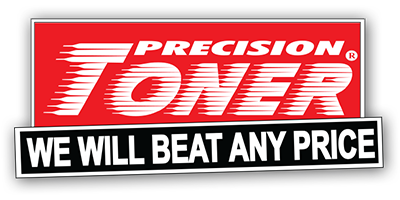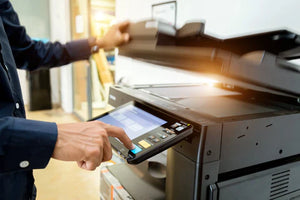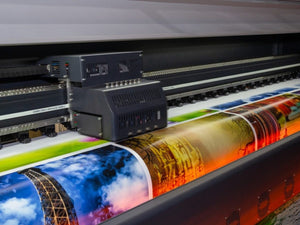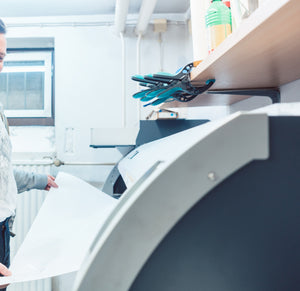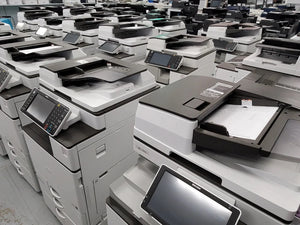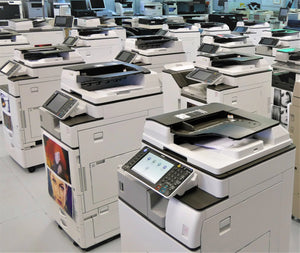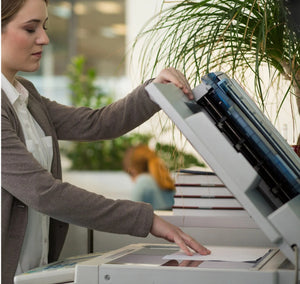News
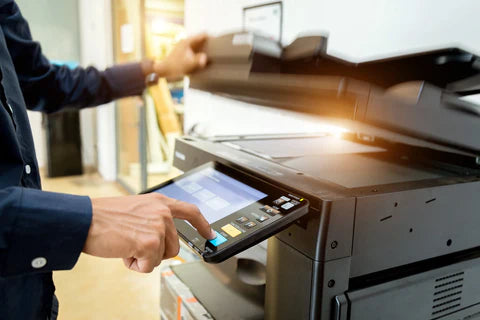
Transform Your Office Efficiency: Discover the Latest Advanced Printers for Sale
In today's fast-paced business world, efficiency is key. Companies are constantly seeking ways to streamline their processes and maximize productivity. One area where organizations often overlook is their office printing solutions. Outdated and inefficient printers can significantly hinder workflow and result in unnecessary delays. To address this issue, it is crucial to explore the latest advanced printers for sale that can transform your office efficiency. This article will guide you through the benefits and features of these cutting-edge printers, helping you make an informed decision for your business.
Table of Contents
- Introduction
- Importance of Efficient Office Printing
- Key Features to Consider
- Laser Printers: Speed and Precision
- Inkjet Printers: Versatility and Cost-effectiveness
- All-in-One Printers: Convenience and Functionality
- Wireless Printing: Enhancing Mobility and Collaboration
- Cloud Printing: Seamless Integration and Accessibility
- Eco-Friendly Printing: Sustainability in the Office
- Choosing the Right Printer for Your Business
- Maintenance and Support
- Cost Considerations
- Case Studies: Success Stories
- Future Trends in Office Printing
- Conclusion
1. Introduction
Efficient office printing plays a vital role in optimizing productivity and workflow. Outdated printers can lead to delays, bottlenecks, and frustrated employees. By investing in the latest advanced printers, businesses can revolutionize their printing processes, saving time, reducing costs, and enhancing overall efficiency.
2. Importance of Efficient Office Printing
Efficient office printing offers numerous advantages to businesses. It enables quick and high-quality document production, boosts employee morale, and improves customer satisfaction. By investing in advanced printers, companies can streamline their printing operations, leading to enhanced productivity and reduced downtime.
3. Key Features to Consider
When searching for the latest advanced printers, several key features should be taken into account. These include:
H2: Speed and Precision
Modern laser printers offer unparalleled speed and precision. They are ideal for high-volume printing tasks, such as producing professional documents, reports, and marketing materials. Laser printers utilize advanced technology to deliver crisp and clear prints, ensuring every detail is captured accurately.
H2: Versatility and Cost-effectiveness
Inkjet printers are known for their versatility and cost-effectiveness. They are suitable for a wide range of printing needs, including photos, brochures, and everyday documents. Inkjet printers are often more affordable upfront, making them an attractive option for small businesses or those with lower printing requirements.
H2: Convenience and Functionality
All-in-one printers combine printing, scanning, copying, and faxing capabilities into a single device. They offer convenience and functionality by eliminating the need for multiple machines. All-in-one printers are space-saving solutions that can simplify office workflows and enhance productivity.
H2: Enhancing Mobility and Collaboration
Wireless printing has become increasingly popular in modern offices. With wireless printers, employees can conveniently print documents from their laptops, smartphones, or tablets without the need for cables or direct connections. This feature promotes mobility and collaboration among team members.
H2: Seamless Integration and Accessibility
Cloud printing allows users to print documents from virtually anywhere by connecting to cloud-based services. It offers seamless integration with various devices and enhances accessibility, enabling employees to print important files remotely. Cloud printing is particularly beneficial for businesses with multiple locations or remote workforce.
H2: Sustainability in the Office
Eco-friendly printing has gained significant attention in recent years. Advanced printers incorporate energy-saving features, duplex printing to reduce paper waste, and eco-friendly ink cartridges. By adopting sustainable printing practices, businesses can contribute to a greener environment while reducing costs.
10. Choosing the Right Printer for Your Business
Selecting the right printer for your business depends on your specific requirements. Consider factors such as the volume of printing, desired print quality, connectivity options, and budget. Conduct thorough research, read reviews, and consult with industry experts to make an informed decision that aligns with your business needs.
11. Maintenance and Support
Once you have chosen an advanced printer, it is essential to establish a maintenance and support plan. Regular maintenance, firmware updates, and technical support ensure the longevity and optimal performance of your printer. Many printer manufacturers offer service contracts and warranties to provide peace of mind and timely assistance when needed.
12. Cost Considerations
While investing in advanced printers can lead to long-term cost savings, it is important to consider the initial investment, ongoing maintenance costs, and the price of consumables such as ink or toner cartridges. Evaluate the total cost of ownership to determine the most cost-effective solution for your business.
13. Case Studies: Success Stories
To gain insights into the benefits of advanced printers, explore case studies of businesses that have successfully improved their office efficiency through printer upgrades. These real-life examples can inspire you and provide practical ideas for implementing advanced printing solutions in your organization.
14. Future Trends in Office Printing
The world of office printing continues to evolve rapidly. Keep an eye on emerging trends, such as 3D printing, mobile printing apps, and AI-powered printing solutions. Staying informed about the latest advancements will enable you to stay ahead of the curve and make informed decisions regarding future printer upgrades.
15. Conclusion
Investing in the latest advanced printers can significantly transform your office efficiency. By considering key features, such as speed, versatility, convenience, and sustainability, you can choose the right printer that meets your specific business needs. Embrace technology, streamline your printing processes, and enjoy enhanced productivity, cost savings, and a more efficient work environment.
FAQs
Q: How do advanced printers improve office efficiency?
- Advanced printers offer faster printing speeds, higher print quality, and additional features like wireless and cloud printing, leading to enhanced productivity and streamlined workflows.
Q: Are laser printers better than inkjet printers for office use?
- Laser printers are ideal for high-volume printing and professional document production, while inkjet printers are versatile and cost-effective, making them suitable for a wide range of office printing needs.
Q: Can I print documents remotely with advanced printers?
- Yes, advanced printers with wireless and cloud printing capabilities allow employees to print documents from their laptops, smartphones, or tablets, promoting mobility and remote collaboration.
Q: How can eco-friendly printing benefit my business?
- Eco-friendly printing practices reduce waste, save energy, and lower costs. By adopting sustainable printing solutions, businesses can contribute to environmental conservation while improving their bottom line.
Q: What are the future trends in office printing?
- Emerging trends in office printing include 3D printing, mobile printing apps, and AI-powered printing solutions. Keeping up with these trends allows businesses to leverage new technologies for improved efficiency and innovation.
- P N
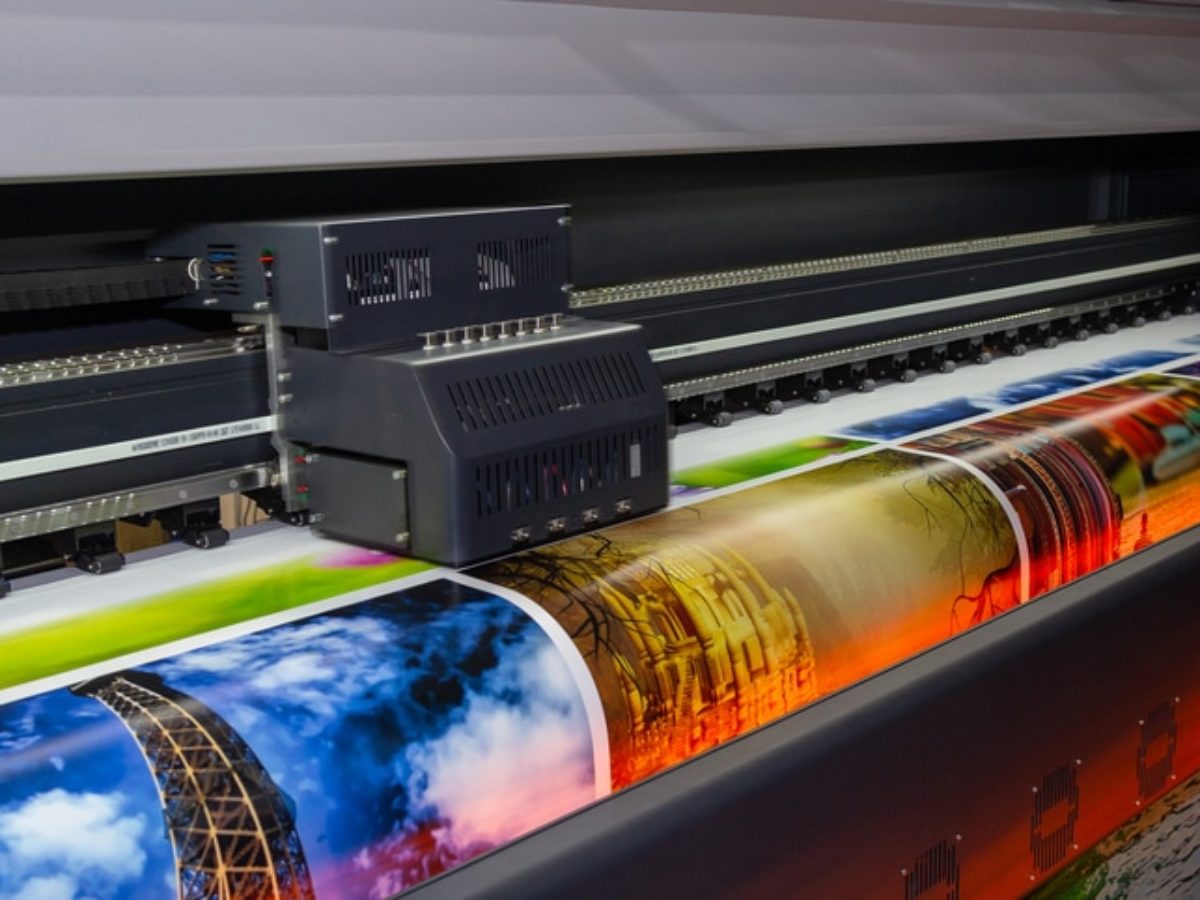
Wide Format Printers for Engineers: The Ultimate Guide
In the world of engineering, the ability to print accurate and detailed plans and schematics is essential. That's where wide format printers come in. These printers allow engineers to create large, detailed prints that accurately represent their designs. In this article, we'll take a closer look at what wide format printers are, how they work, and the different types available. We'll also provide tips on what to look for when purchasing a wide format printer for engineering purposes.
Table of Contents
- What are wide format printers?
- How do wide format printers work?
- Types of wide format printers
- Inkjet
- Laser
- Advantages of wide format printers for engineering
- Considerations when choosing a wide format printer
- Print quality
- Speed
- Size and capacity
- Cost
- Top wide format printers for engineering
- HP DesignJet Z9+ Printer series
- Canon imagePROGRAF PRO-1000
- Epson SureColor P8000
- Maintenance and upkeep of wide format printers
- Common issues with wide format printers and how to troubleshoot them
- Tips for getting the most out of your wide format printer
- Conclusion
- FAQs
What are wide format printers?
Wide format printers, also known as large format printers, are designed to print larger documents than traditional printers. They are commonly used in engineering, architecture, and graphic design, where larger prints are often required. These printers can print on a variety of media, including paper, vinyl, canvas, and even metal.
How do wide format printers work?
Wide format printers work in a similar way to traditional printers, but on a larger scale. Instead of using standard 8.5 x 11-inch paper, wide format printers use rolls of paper or other media that can be up to several feet wide. The printer head moves back and forth across the paper, laying down ink or toner to create the image or text. Some wide format printers use multiple ink cartridges, allowing for a wider range of colors and greater accuracy.
Types of wide format printers
There are two main types of wide format printers: inkjet and laser.
Inkjet
Inkjet printers use liquid ink that is sprayed onto the paper. They are typically more affordable than laser printers and are better suited for printing photos or color graphics. However, the ink can be prone to smudging and can be less durable than toner.
Laser
Laser printers use toner, which is a dry powder that is melted onto the paper. They are more expensive than inkjet printers but are better suited for printing text or line drawings. Laser prints are generally more durable than inkjet prints and are less prone to smudging.
Advantages of wide format printers for engineering
Wide format printers offer several advantages for engineering professionals:
- Ability to print large, detailed plans and schematics
- Faster printing speeds than traditional printers
- Greater accuracy and color range than traditional printers
- Ability to print on a variety of media
Considerations when choosing a wide format printer
When choosing a wide format printer for engineering purposes, there are several factors to consider:
Print quality
Look for a printer that offers high-resolution printing for accurate and detailed plans and schematics.
Speed
Choose a printer that can print quickly to help you meet deadlines.
Size and capacity
Consider the size of the printer and its paper capacity to ensure it can handle the types of prints you need.
Cost
Wide format printers can be expensive, so consider your budget and the ongoing costs of ink or toner.
Top wide format printers for engineering
Here are three of the top wide format printers for engineering purposes:
1. HP DesignJet Z9+ Printer series
The HP DesignJet Z9+ Printer series offers exceptional print quality and color accuracy, making it an ideal choice for engineering professionals. It uses HP's new high-definition printhead technology, which delivers sharper, more accurate prints with a wider color gamut. The printer can handle media up to 44 inches wide and has a built-in spectrophotometer for color calibration. The Z9+ also includes advanced security features, such as secure boot and firmware validation, to protect your confidential data.
2. Canon imagePROGRAF PRO-1000
The Canon imagePROGRAF PRO-1000 is a top-of-the-line printer that is ideal for engineering applications. It uses 12 individual Lucia Pro ink cartridges to deliver stunning color accuracy and detail. The printer can handle media up to 17 inches wide and includes a built-in color densitometer for precise color calibration. The PRO-1000 also includes advanced software, such as Canon's Print Studio Pro plug-in, which allows for seamless integration with popular design software.
3. Epson SureColor P8000
The Epson SureColor P8000 is a powerful and versatile printer that is well-suited for engineering applications. It uses Epson's PrecisionCore technology to deliver exceptional print quality and speed. The P8000 can handle media up to 44 inches wide and includes a built-in spectrophotometer for precise color calibration. The printer also includes advanced features, such as a roll paper adapter and automatic nozzle checking, to enhance productivity and reliability.
Maintenance and upkeep of wide format printers
Proper maintenance and upkeep of your wide format printer is essential to ensure its longevity and performance. Here are some tips to keep in mind:
- Regularly clean the printer head and other components to prevent clogs and buildup.
- Use only high-quality ink or toner cartridges to ensure the best print quality.
- Store paper and other media in a dry, cool environment to prevent moisture damage.
- Follow the manufacturer's recommended maintenance schedule and procedures.
Common issues with wide format printers and how to troubleshoot them
Like any piece of technology, wide format printers can experience issues from time to time. Here are some common problems and solutions:
- Clogged printer heads: This can be caused by using low-quality ink or not using the printer regularly. Try running a cleaning cycle or using a specialized cleaning solution.
- Paper jams: This can be caused by using the wrong type of paper or overloading the printer. Make sure to use the recommended paper type and follow the printer's paper capacity guidelines.
- Poor print quality: This can be caused by a variety of factors, including clogged printer heads or low-quality ink. Try cleaning the printer head, using high-quality ink, and adjusting the print settings.
Tips for getting the most out of your wide format printer
To maximize the performance and longevity of your wide format printer, consider these tips:
- Use high-quality paper and media for the best print results.
- Keep the printer in a clean and dry environment to prevent damage.
- Use the recommended settings and profiles for your specific media type.
- Follow the manufacturer's recommended maintenance schedule and procedures.
- Use a printer cover when not in use to prevent dust buildup.
Conclusion
Wide format printers are an essential tool for engineering professionals who need to print large, detailed plans and schematics. When choosing a wide format printer, consider factors such as print quality, speed, size and capacity, and cost. With proper maintenance and upkeep, a wide format printer can provide years of reliable performance.
- P N
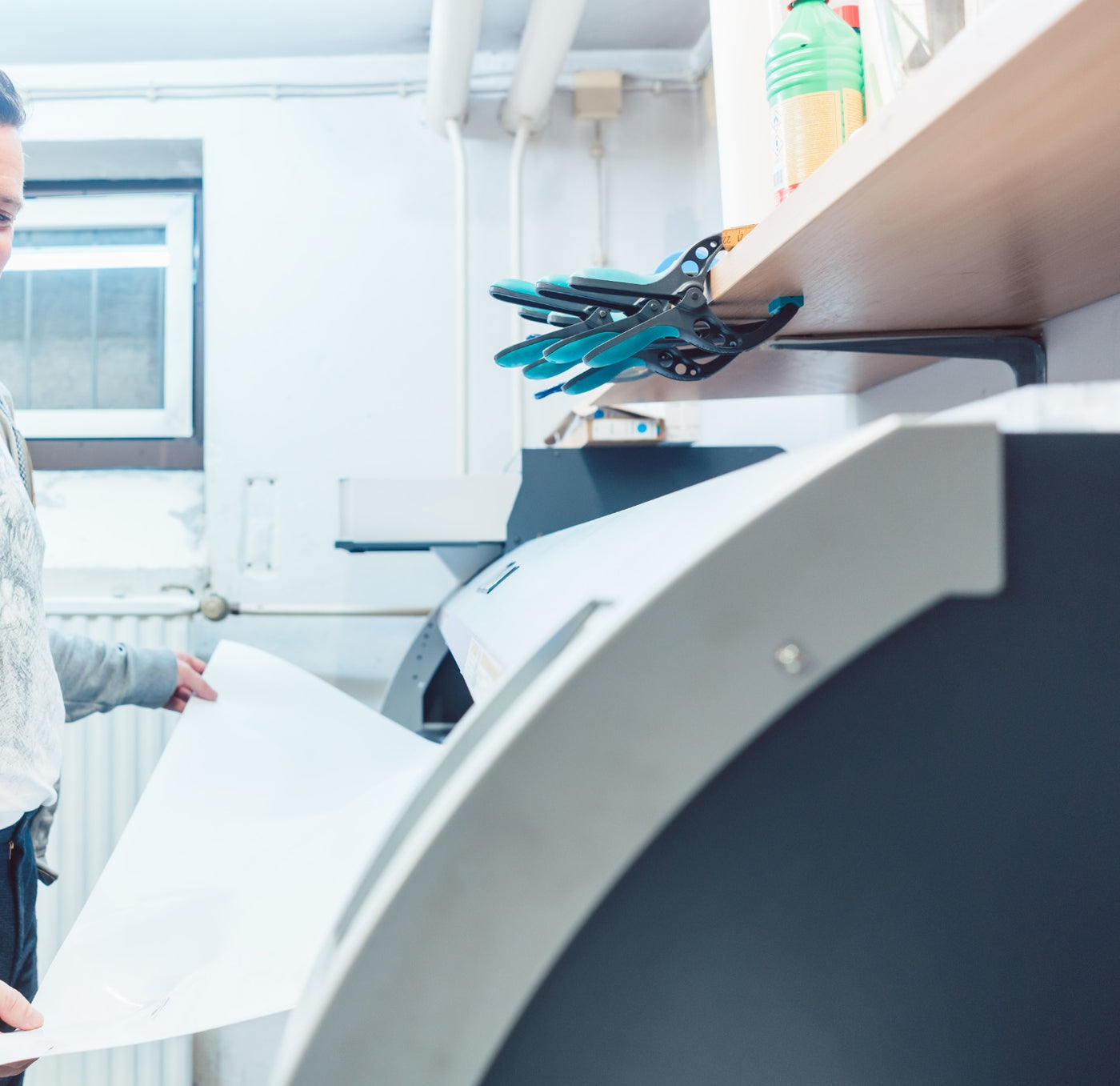
Wide Format Printers for Architects
Architects and designers rely heavily on accurate and high-quality printouts of their plans, renderings, and schematics. This is where wide format printers come in handy. Wide format printers are designed to print large-scale graphics and documents with precision and detail. In this article, we will discuss the benefits of using wide format printers for architects, the different types of wide format printers available, the factors to consider when choosing one, and some of the top models on the market.
Benefits of Using Wide Format Printers for Architects
- High-quality printing: Wide format printers produce sharp and vibrant colors with exceptional clarity and detail. This is important for architects as they need to convey their designs accurately to clients and contractors.
- Cost-effectiveness: Wide format printers are cost-effective as they allow architects to print large-scale documents and graphics in-house, saving them money on outsourcing the printing job.
- Time-saving: Wide format printers are faster than regular printers, allowing architects to print multiple copies of their designs quickly and efficiently.
- Customization: Wide format printers offer architects the ability to customize their prints, such as selecting different paper types, inks, and print settings.
Types of Wide Format Printers
There are several types of wide format printers available, each with its own strengths and weaknesses. Some of the most common types are:
- Inkjet wide format printers: These printers use liquid ink to produce high-quality prints on a variety of surfaces. They are versatile and cost-effective but may require more maintenance than other types of printers.
- Laser wide format printers: These printers use toner cartridges to produce prints. They are faster than inkjet printers but may not produce the same level of detail or color accuracy.
- Solvent-based wide format printers: These printers use solvent-based ink to produce prints that are durable and resistant to outdoor conditions. They are commonly used for outdoor signage and graphics.
- UV-cured wide format printers: These printers use UV-cured ink that dries quickly and is resistant to fading and water damage. They are ideal for printing on non-porous surfaces such as plastic and metal.
Factors to Consider When Choosing a Wide Format Printer
When choosing a wide format printer for architectural projects, there are several factors to consider, such as:
- Size and capacity: Architects should consider the size and capacity of the printer based on the size of the documents and graphics they will be printing.
- Print resolution: The print resolution is the level of detail and sharpness of the printed image. Architects should choose a printer with high print resolution to ensure accuracy and detail in their designs.
- Speed: The speed of the printer is an important consideration as it affects the turnaround time for printing large-scale documents and graphics.
- Connectivity: Architects should consider the connectivity options of the printer, such as Wi-Fi, USB, and Ethernet, to ensure it can easily connect to their devices.
- Durability and maintenance: The durability and maintenance of the printer are important factors to consider to ensure it can withstand frequent use and remain in good condition.
Top Wide Format Printers for Architects
There are several wide format printers on the market that are ideal for architects. Here are five top models:
- HP DesignJet Z6: This printer offers high-quality printing with exceptional color accuracy and a wide color gamut. It also has a fast printing speed and is easy to use.
- Canon imagePROGRAF PRO-1000: This printer is known for its exceptional print quality and uses 12-color Lucia Pro ink for vivid colors and sharp details.
- Epson SureColor P10000: This printer offers high-speed printing with precision and accuracy, making it ideal for large-scale architectural documents and graphics.
- Roland VersaEXPRESS RF-640: This printer is fast and produces high-quality prints on a variety of media types, including vinyl and banner material.
- Mimaki CJV300-160: This printer offers versatile printing options and can print on a wide range of media types with high resolution and color accuracy.
Tips for Maintaining and Optimizing Wide Format Printers
To maintain and optimize the performance of wide format printers, architects should follow these tips:
- Regular cleaning and maintenance: Regular cleaning and maintenance of the printer, including the printhead, ink cartridges, and paper rollers, can prolong the life of the printer and ensure consistent performance.
- Using high-quality ink and paper: Using high-quality ink and paper can improve the quality of the prints and reduce the need for frequent maintenance.
- Adjusting print settings for different projects: Architects should adjust the print settings based on the project requirements, such as print resolution, color accuracy, and media type.
Conclusion
In conclusion, wide format printers are an essential tool for architects and designers, offering high-quality and cost-effective printing for large-scale documents and graphics. When choosing a wide format printer, architects should consider the size, resolution, speed, connectivity, and maintenance requirements. By following these tips and choosing a top-performing printer, architects can optimize their workflow and produce high-quality prints with precision and accuracy.
FAQs
Q. What is the difference between wide format printers and regular printers?
- A. Wide format printers are designed to print larger documents and graphics, while regular printers are designed for standard-size prints.
Q. How do I choose the right ink for my wide format printer?
- A. Choose an ink that is compatible with your printer model and is suitable for the media type you will be printing on.
Q. Can I use my wide format printer for other types of projects besides architecture?
- A. Yes, wide format printers can be used for other types of large-scale printing projects, such as banners, signs, and posters.
Q. How often do I need to replace the printhead on my wide format printer?
- A. The frequency of printhead replacement depends on the printer model and usage. It is recommended to follow the guidelines provided with your specific machine.
- P N
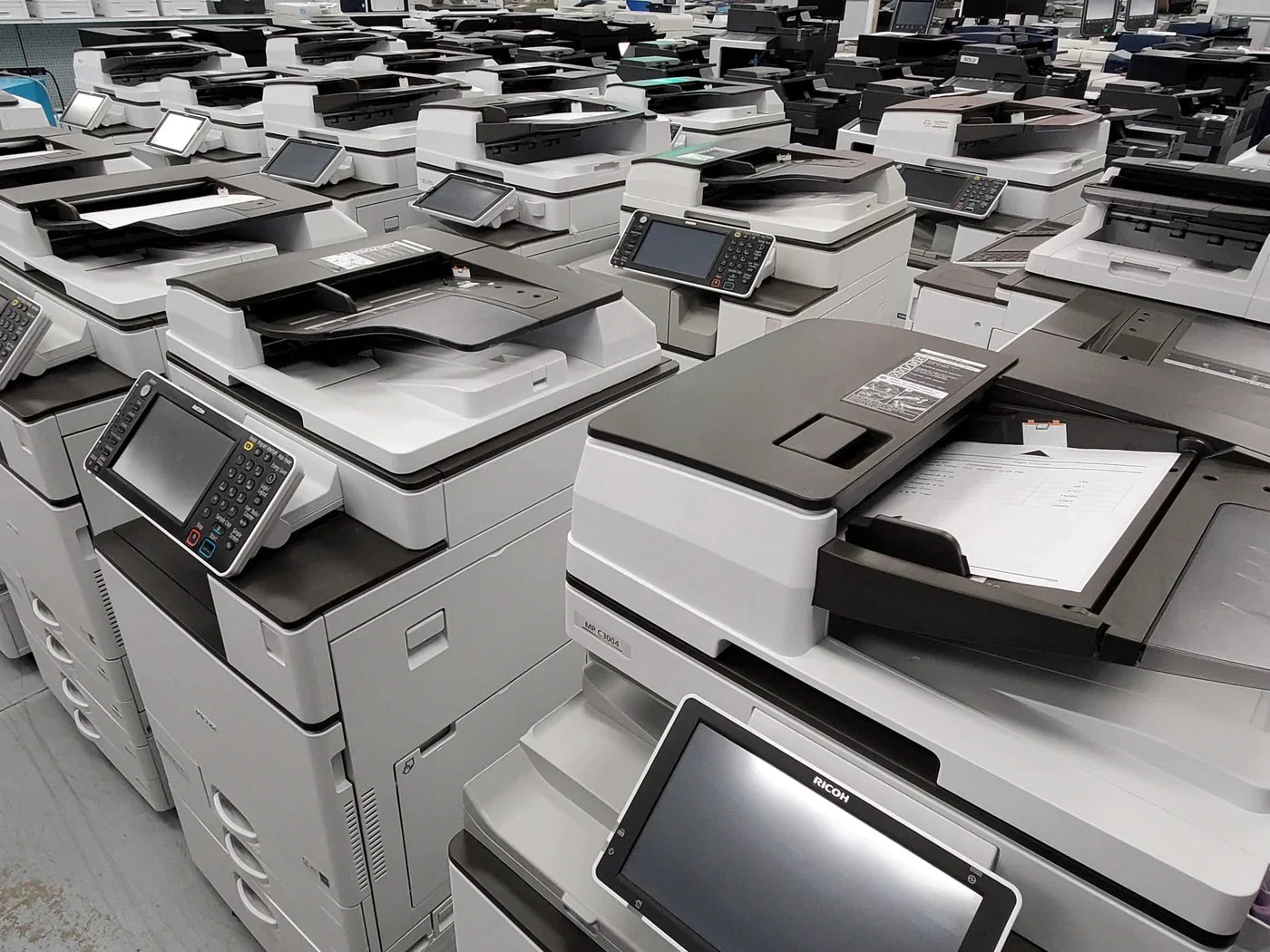
Which Type of Printer Can Be Very Cost Effective for a Small Business?
Small businesses have to manage their budgets effectively in order to grow and stay competitive. One way to save money is by choosing the right printer. With so many different types of printers available, it can be difficult to know which one to choose. In this article, we will explore which type of printer can be very cost effective for a small business.
Table of Contents
- Introduction
- Inkjet Printers
- Laser Printers
- All-in-One Printers
- Mobile Printers
- Wide Format Printers
- Print Quality
- Cost Per Page
- Maintenance Costs
- Connectivity Options
- Paper Handling
- Energy Efficiency
- Durability and Reliability
- User-Friendliness
- Conclusion
- FAQs
Inkjet Printers
Inkjet printers are often the go-to option for home users because of their affordable price point. They work by spraying liquid ink onto the paper through small nozzles. While inkjet printers can produce high-quality color prints, they are not the most cost-effective option for small businesses in the long run.
Laser Printers
Laser printers use toner instead of ink and are more expensive upfront. However, they are much more cost-effective in the long run because they have a lower cost per page. They are also faster than inkjet printers and can handle larger volumes of print jobs. Laser printers are a better choice for small businesses that need to print a lot of documents quickly and cost-effectively.
All-in-One Printers
All-in-one printers are a combination of a printer, scanner, copier, and sometimes even a fax machine. They are a convenient and space-saving option for small businesses. All-in-one printers can be either inkjet or laser and can save you money by eliminating the need for separate devices.
Mobile Printers
Mobile printers are designed for printing on the go. They are small and lightweight and can connect to smartphones or tablets via Bluetooth or Wi-Fi. They are a good choice for small businesses that require printing on the move, such as sales representatives or field technicians.
Wide Format Printers
Wide format printers are designed for printing larger documents, such as banners or blueprints. They are usually more expensive and larger in size than other printers. Small businesses that require this type of printing should consider the cost of ink or toner, maintenance, and paper before making a purchase.
Print Quality
Print quality is an important consideration for small businesses. While inkjet printers can produce high-quality color prints, laser printers are better at producing sharp and crisp text. Small businesses that need to print a lot of documents with text should consider laser printers.
Cost Per Page
The cost per page is a key factor in choosing a cost-effective printer. Laser printers have a lower cost per page than inkjet printers. Small businesses that print a lot of documents regularly should consider the cost per page before making a purchase.
Maintenance Costs
Maintenance costs are another factor to consider when choosing a printer. Laser printers have fewer moving parts and require less maintenance than inkjet printers. Inkjet printers require more frequent replacement of ink cartridges and printheads, which can be costly over time.
Connectivity Options
Small businesses should consider the connectivity options available for a printer before making a purchase. Wi-Fi, Ethernet, and USB connectivity are common options for printers. Wi-Fi connectivity is a convenient option for small businesses that require multiple devices to connect to the printer.
Paper Handling
Small businesses should consider the type of paper that the printer can handle. Some printers can handle thicker paper, such as cardstock, while others can handle larger paper sizes. Businesses with specific printing needs should make sure that the printer they choose can handle the paper types and sizes they require.
Energy Efficiency
Energy efficiency is becoming increasingly important for small businesses as they look to reduce their carbon footprint and save money on their electricity bills. Energy Star certified printers use less energy and can save small businesses money in the long run.
Durability and Reliability
Small businesses should consider the durability and reliability of a printer before making a purchase. Laser printers are known for their durability and can handle heavy use. Inkjet printers, on the other hand, are more prone to breakdowns and require more frequent maintenance.
User-Friendliness
Small businesses should consider how easy a printer is to use before making a purchase. All-in-one printers often have a user-friendly interface that makes it easy to navigate and switch between different functions. Some printers also come with touchscreens that make it easy to select options and settings.
Conclusion
In conclusion, the type of printer that can be most cost-effective for a small business depends on specific needs and requirements. While inkjet printers may seem like a more affordable option, laser printers are more cost-effective in the long run due to their lower cost per page and durability. All-in-one printers can save small businesses money by eliminating the need for separate devices. When considering a printer, small businesses should also consider factors such as print quality, maintenance costs, connectivity options, paper handling, energy efficiency, durability, and user-friendliness.
FAQs
What is the most cost-effective printer for a small business?
- Laser printers are generally the most cost-effective option for small businesses due to their lower cost per page and durability.
Can inkjet printers be cost-effective for a small business?
- While inkjet printers may be more affordable upfront, they are not the most cost-effective option in the long run due to their higher cost per page and maintenance costs.
What is an all-in-one printer?
- An all-in-one printer is a combination of a printer, scanner, copier, and sometimes a fax machine. It can save small businesses money by eliminating the need for separate devices.
What is the importance of energy efficiency in a printer?
- Energy efficiency can save small businesses money on their electricity bills and reduce their carbon footprint.
How can small businesses ensure they choose the right printer for their needs?
- Small businesses should consider their specific printing needs and requirements, such as print volume, print quality, paper handling, connectivity options, energy efficiency, and user-friendliness, before making a purchase.
- P N
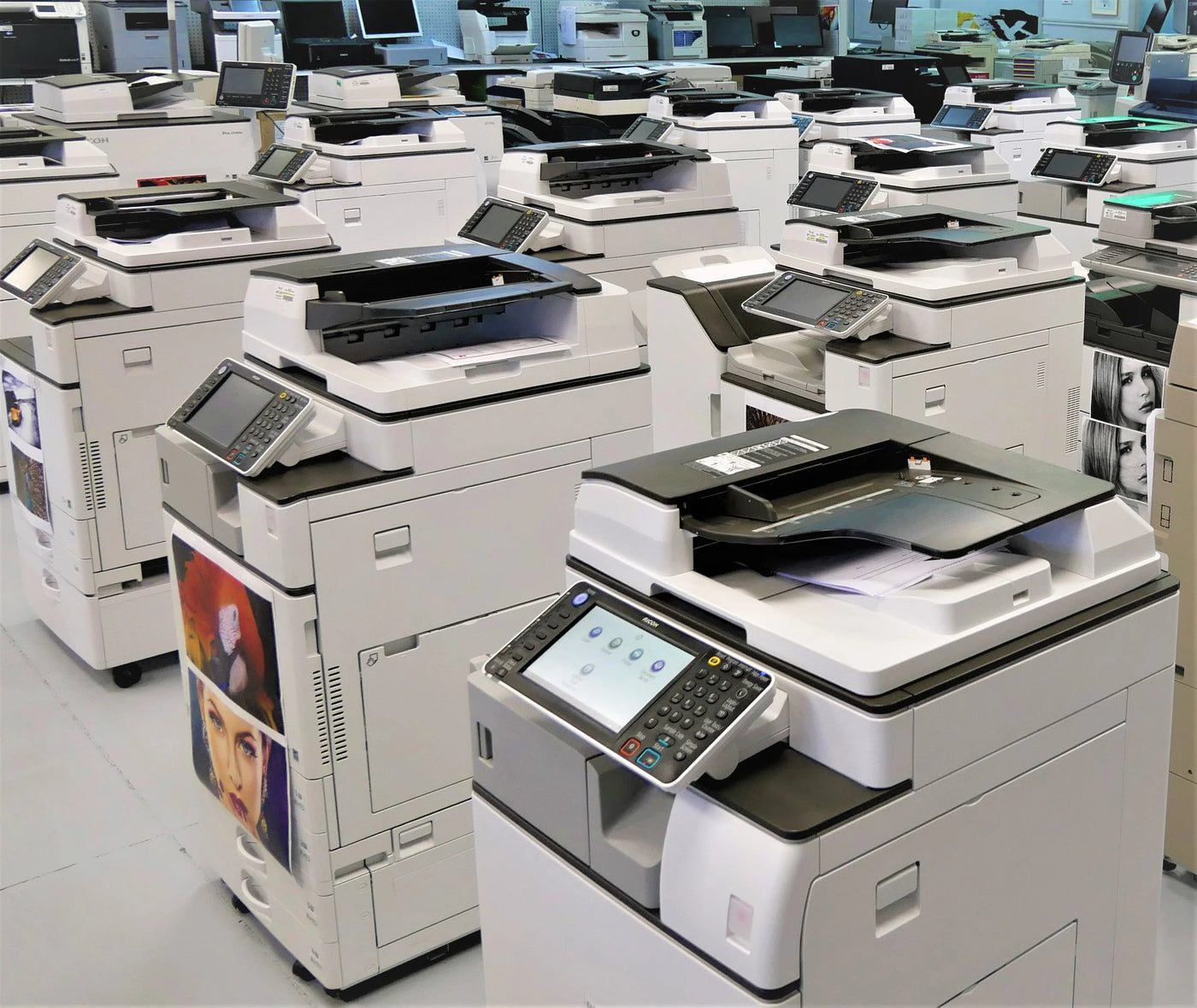
How to Choose a Copier for Your Business: A Comprehensive Guide
In today's digital world, paper is still an essential part of many businesses' daily operations. A good copier is an investment that can save you time and money while providing high-quality documents. With so many options available in the market, it can be challenging to choose the right one for your business needs. In this article, we will guide you through the process of choosing the best copier for your business.
Factors to Consider When Choosing a Copier
Volume and Speed
Volume and speed are critical factors to consider when selecting a copier. You need to determine the number of pages your business needs to print per month and choose a copier that can handle that volume.
Functions
Copiers come with varying features and functions. Before making a purchase, consider what functions you need. For example, do you need a copier that can also scan, fax, or print double-sided documents?
Size
The size of the copier is also an important factor to consider, especially if you have limited office space. Choose a copier that fits your office space and is easy to move around.
Cost
Cost is a significant consideration when purchasing a copier. It is essential to consider the initial cost, maintenance cost, and cost per page.
Connectivity
Most copiers can be connected to your office network, allowing multiple users to access it. However, some copiers have additional connectivity options, such as wireless or mobile printing.
Brand Reputation
Brand reputation is also an important factor to consider. Choose a brand that is known for producing high-quality and reliable copiers.
Types of Copiers
Copiers come in different types, each with its advantages and disadvantages.
Laser Copiers
Laser copiers use toner and a heated fuser to print documents. They are fast and efficient, making them ideal for businesses that need to print large volumes of documents.
Inkjet Copiers
Inkjet copiers use liquid ink to print documents. They are suitable for businesses that need to print high-quality documents, such as photographs or graphics.
Multifunction Copiers
Multifunction copiers can print, scan, copy, and fax documents. They are ideal for businesses that need all these functions in one machine.
Production Copiers
Production copiers are high-end copiers that are designed for businesses that need to print a large number of documents daily. They are faster and more efficient than other types of copiers.
Maintenance and Support
Proper maintenance and support are crucial to ensure that your copier runs smoothly and lasts longer. When choosing a copier, consider the manufacturer's maintenance and support policies.
Conclusion
Choosing the right copier for your business can be overwhelming, but considering factors such as volume, speed, functions, size, cost, connectivity, and brand reputation can help you make an informed decision. Additionally, understanding the different types of copiers available in the market and the maintenance and support required can also help you choose the best copier for your business needs.
- P N
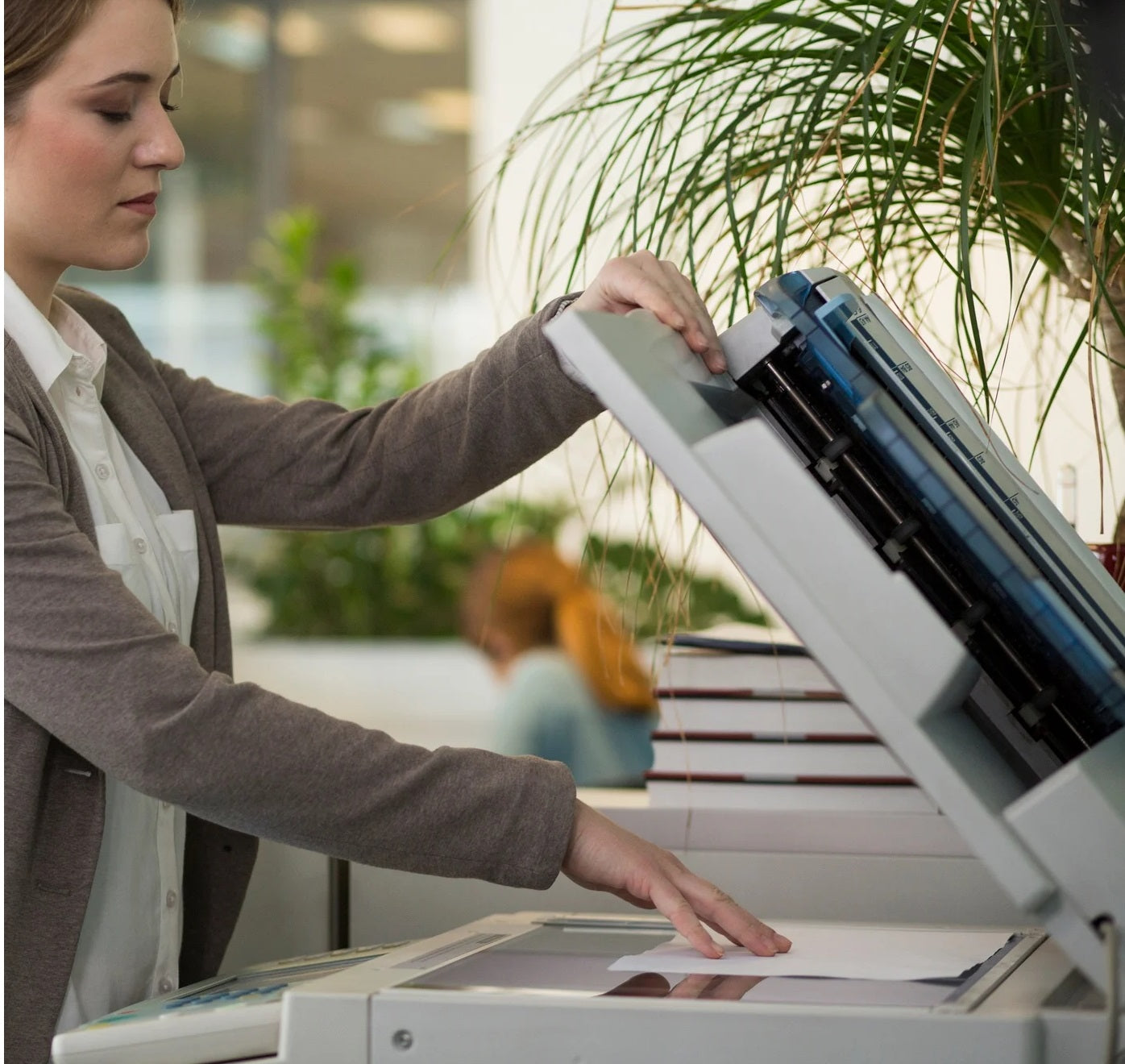
Which Photocopy Machine is Best for Office Use?
As offices become increasingly digital, photocopiers remain a staple for many businesses. From producing handouts to creating reports and contracts, photocopy machines are essential for keeping a business running smoothly. With so many options on the market, choosing the right photocopy machine for your office can be overwhelming. In this article, we will explore the different types of photocopy machines, what to consider before buying one, and which models are best suited for different types of offices.
Table of Contents
- Introduction
- Types of Photocopy Machines
- Analog Photocopiers
- Digital Photocopiers
- Multifunctional Photocopiers
- Wide-Format Photocopiers
- Factors to Consider Before Buying a Photocopy Machine
- Printing Speed
- Printing Volume
- Connectivity
- Paper Capacity
- Cost
- Best Photocopy Machines for Small Offices
- Best Photocopy Machines for Large Offices
- Best Photocopy Machines for High-Volume Printing
- Best Photocopy Machines for Color Printing
- Maintenance and Troubleshooting
- Conclusion
Types of Photocopy Machines
Photocopy machines come in different types depending on the technology used to make copies. Here are some of the most common types of photocopy machines:
Analog Photocopiers
Analog photocopy machines are the oldest type of photocopy machines. They use light and mirrors to make copies of documents. Analog photocopy machines are affordable, but they are slow, produce low-quality copies, and have limited features.
Digital Photocopiers
Digital photocopy machines are more advanced than analog photocopy machines. They use a scanner to create a digital copy of the document, which is then printed onto paper. Digital photocopy machines are faster, produce high-quality copies, and have more features. They are more expensive than analog photocopy machines.
Multifunctional Photocopiers
Multifunctional photocopiers are machines that combine the functions of a printer, scanner, fax machine, and photocopier in one device. They are more expensive than other types of photocopy machines, but they are ideal for small offices with limited space.
Wide-Format Photocopiers
Wide-format photocopiers are used to produce large documents such as posters, blueprints, and architectural plans. They are more expensive than other types of photocopy machines, but they are ideal for businesses that require large-format printing.
Factors to Consider Before Buying a Photocopy Machine
Before buying a photocopy machine, there are several factors to consider. Here are some of the most important factors to consider:
Printing Speed
Printing speed is the number of pages that the photocopy machine can produce per minute. The printing speed varies depending on the type of photocopy machine. If your office requires high-volume printing, choose a photocopy machine with a high printing speed.
Printing Volume
Printing volume is the number of pages that the photocopy machine can produce per month. The printing volume varies depending on the type of photocopy machine. If your office requires high-volume printing, choose a photocopy machine with a high printing volume.
Connectivity
Connectivity refers to the ability of the photocopy machine to connect to other devices such as computers, smartphones, and tablets. If your office requires printing from multiple devices, choose a photocopy machine with wireless connectivity.
Paper Capacity
Paper capacity refers to the number of sheets that the photocopy machine can hold at once. If your office requires high-volume printing, choose a photocopy machine with a large paper capacity.
Cost
The cost of a photocopy machine is an important factor to consider. There are different types of photocopy machines at different price points. It's important to choose a machine that fits within your budget but also meets your needs. Keep in mind that cheaper machines may have limited features and may require more maintenance in the long run.
Best Photocopy Machines for Small Offices
For small offices, it's important to choose a photocopy machine that is affordable, compact, and has a low cost of ownership. Here are some of the best photocopy machines for small offices:
- Canon imageCLASS MF743Cdw: This is a multifunctional digital photocopy machine that can print, scan, copy, and fax. It has a printing speed of 28 pages per minute, a printing volume of 30,000 pages per month, and a paper capacity of 300 sheets. It also has wireless connectivity and is compatible with various mobile devices.
- HP Color LaserJet Pro MFP M477fdw: This is another multifunctional digital photocopy machine that can print, scan, copy, and fax. It has a printing speed of 28 pages per minute, a printing volume of 50,000 pages per month, and a paper capacity of 300 sheets. It also has wireless connectivity and is compatible with various mobile devices.
- Brother MFC-L8900CDW: This is a multifunctional digital photocopy machine that can print, scan, copy, and fax. It has a printing speed of 33 pages per minute, a printing volume of 60,000 pages per month, and a paper capacity of 300 sheets. It also has wireless connectivity and is compatible with various mobile devices.
Best Photocopy Machines for Large Offices
For large offices, it's important to choose a photocopy machine that is fast, has a high paper capacity, and can handle high printing volumes. Here are some of the best photocopy machines for large offices:
- Canon imageRUNNER ADVANCE C5235A: This is a multifunctional digital photocopy machine that can print, scan, copy, and fax. It has a printing speed of 35 pages per minute, a printing volume of 80,000 pages per month, and a paper capacity of 2,250 sheets. It also has wireless connectivity and is compatible with various mobile devices.
- Ricoh MP C4503: This is a multifunctional digital photocopy machine that can print, scan, copy, and fax. It has a printing speed of 45 pages per minute, a printing volume of 50,000 pages per month, and a paper capacity of 1,200 sheets. It also has wireless connectivity and is compatible with various mobile devices.
- Xerox WorkCentre 7835: This is a multifunctional digital photocopy machine that can print, scan, copy, and fax. It has a printing speed of 35 pages per minute, a printing volume of 110,000 pages per month, and a paper capacity of 2,130 sheets. It also has wireless connectivity and is compatible with various mobile devices.
Best Photocopy Machines for High-Volume Printing
For businesses that require high-volume printing, it's important to choose a photocopy machine that can handle large printing volumes without compromising on quality. Here are some of the best photocopy machines for high-volume printing:
- Konica Minolta bizhub PRESS C1070: This is a digital photocopy machine that is designed for high-volume printing. It has a printing speed of 71 pages per minute, a printing volume of 700,000 pages per month, and a paper capacity of 13,890 sheets. It also has wireless connectivity and is compatible with various mobile devices.
- Xerox Color C60/C70: This is a digital photocopy machine that is designed for high-volume printing. It has a printing speed of up to 70 pages per minute, a printing volume of 300,000 pages per month, and a paper capacity of 7,260 sheets. It also has wireless connectivity and is compatible with various mobile devices.
- HP PageWide Enterprise Color MFP 780dn: This is a digital photocopy machine that is designed for high-volume printing. It has a printing speed of up to 75 pages per minute, a printing volume of 50,000 pages per month, and a paper capacity of 1,050 sheets. It also has wireless connectivity and is compatible with various mobile devices.
Best Photocopy Machines for Color Printing
For businesses that require color printing, it's important to choose a photocopy machine that can produce high-quality color prints without compromising on speed. Here are some of the best photocopy machines for color printing:
- Xerox WorkCentre 6515: This is a digital photocopy machine that can print, scan, copy, and fax. It has a printing speed of up to 30 pages per minute, a printing volume of 50,000 pages per month, and a paper capacity of 300 sheets. It produces high-quality color prints and is compatible with various mobile devices.
- HP Color LaserJet Enterprise MFP M577dn: This is a multifunctional digital photocopy machine that can print, scan, copy, and fax. It has a printing speed of up to 40 pages per minute, a printing volume of 80,000 pages per month, and a paper capacity of 650 sheets. It produces high-quality color prints and is compatible with various mobile devices.
- Canon imageRUNNER ADVANCE C5535i III: This is a multifunctional digital photocopy machine that can print, scan, copy, and fax. It has a printing speed of up to 35 pages per minute, a printing volume of 80,000 pages per month, and a paper capacity of 2,300 sheets. It produces high-quality color prints and is compatible with various mobile devices.
Maintenance and Troubleshooting
To keep your photocopy machine running smoothly, it's important to perform regular maintenance and troubleshooting. Here are some tips for maintaining your photocopy machine:
- Clean the glass and rollers regularly to prevent dust and debris from affecting the quality of the copies.
- Replace toner and other consumables when needed to avoid low-quality prints.
- Keep the photocopy machine in a dry, cool place to prevent damage from moisture and heat.
If you encounter any problems with your photocopy machine, try troubleshooting the issue by checking the user manual or contacting customer support.
Conclusion
Choosing the right photocopy machine for your office can be a daunting task, but by considering factors such as printing speed, volume, connectivity, paper capacity, and cost, you can find a machine that meets your needs. The best photocopy machine for your office will depend on the size of your business, the volume of printing, and the type of printing you require. By selecting the right machine and maintaining it properly, you can ensure that your business runs smoothly and efficiently.
- P N
